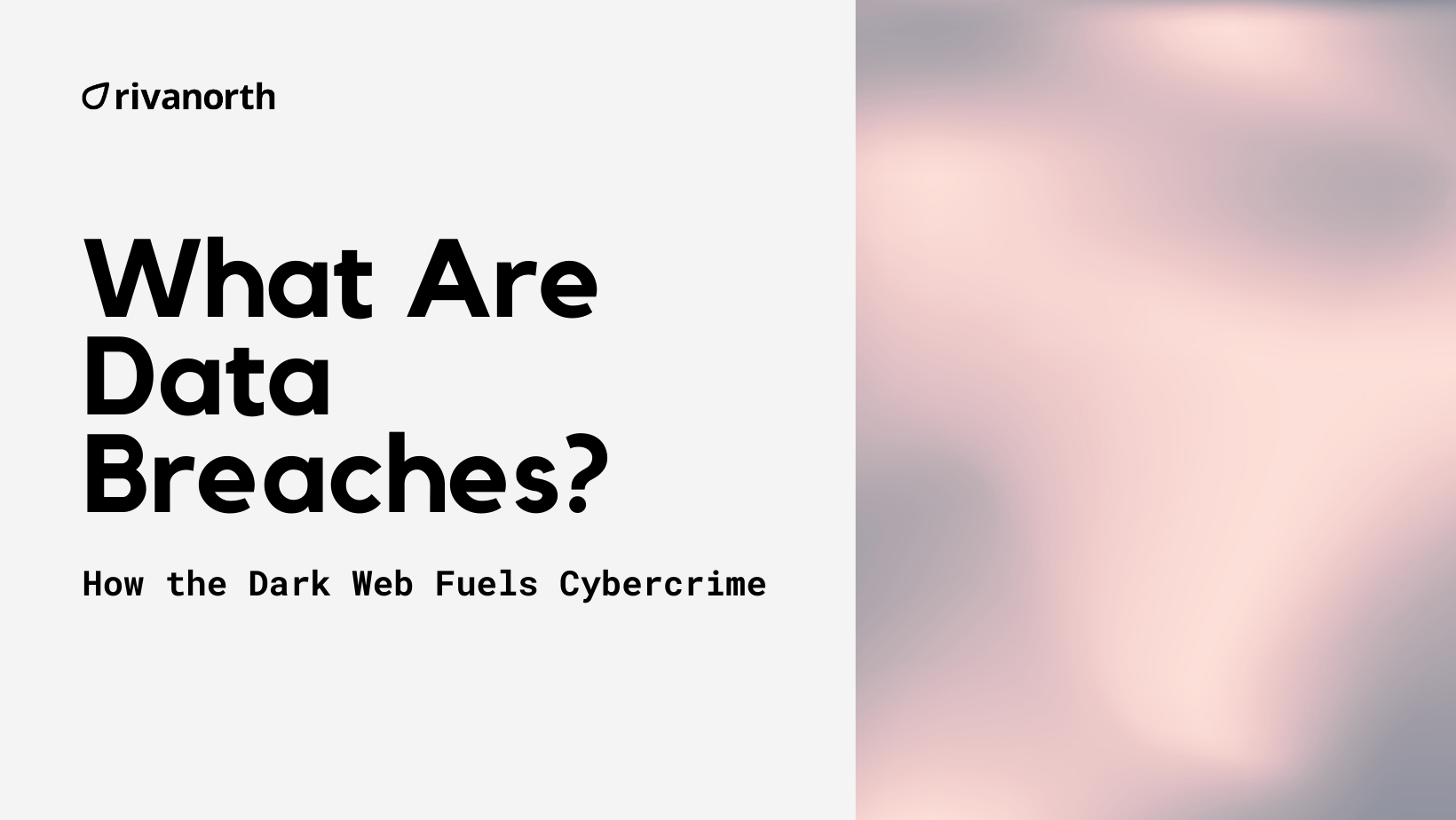What Are Data Breaches? How the Dark Web Fuels Cybercrime
Read Time 4 mins | 13 January 2025

Data breaches are a growing concern for businesses and individuals alike, often resulting in stolen information being exposed and exploited. The dark web frequently plays a key role in the lifecycle of a data breach, providing a marketplace where stolen data is bought, sold, or shared. Understanding what data breaches are, how they happen, and how the dark web facilitates their exploitation is crucial for safeguarding sensitive information.
What Is a Data Breach?
A data breach occurs when sensitive, confidential, or protected information is accessed, stolen, or exposed without authorisation. These breaches can target businesses, governments, or individuals, compromising data such as:
- Personal Identifiable Information (PII): Names, addresses, Tax File Numbers (TFNs), Medicare details, and phone numbers.
- Financial Data: Credit card details, bank account information, and transaction records.
- Intellectual Property: Trade secrets, proprietary data, and research.
- Login Credentials: Usernames and passwords for online accounts.
Common Causes of Data Breaches
Data breaches can occur through various methods, including:
1. Phishing Attacks
Cybercriminals use fake emails or messages to trick individuals into revealing login credentials or other sensitive data.
2. Weak or Stolen Passwords
Insecure passwords or reused credentials make it easier for attackers to gain unauthorised access.
3. Insider Threats
Employees or contractors with malicious intent or accidental negligence can expose sensitive data.
4. Software Vulnerabilities
Outdated or unpatched software creates entry points for attackers.
5. Misconfigured Systems
Improperly configured databases, cloud storage, or servers can leave sensitive data exposed.
The Dark Web’s Role in Data Breaches
The dark web acts as a hub for cybercriminals to exploit stolen data, facilitating the following activities:
1. Selling Stolen Data
Once obtained, stolen data is often listed for sale on dark web marketplaces. Buyers can purchase this data for use in further cyberattacks or fraudulent activities.
2. Credential Stuffing Attacks
Hackers use login credentials exposed in breaches to gain access to other accounts, exploiting the common practice of password reuse.
3. Ransomware Operations
Attackers who deploy ransomware may sell encrypted data decryption keys or threaten to release sensitive information on the dark web unless a ransom is paid.
4. Building Custom Malware
Cybercriminals purchase tools, such as malware kits or exploit scripts, on the dark web to carry out additional breaches.
5. Sharing Information for Free
Sometimes, hackers release stolen data for free on the dark web to gain notoriety or disrupt organisations without monetary motives.
Industries Most Affected by Data Breaches
Some sectors are particularly vulnerable to data breaches due to the value of their information:
- Healthcare: Medical records contain valuable personal and financial data.
- Finance: Bank account details and credit card numbers are prime targets.
- E-Commerce: Retailers store large volumes of customer payment information.
- Education: Universities manage personal data for students, faculty, and research.
How to Protect Your Business from Data Breaches and Dark Web Threats
1. Implement Dark Web Monitoring
Tools like Oko can continuously scan the dark web for signs of stolen credentials or sensitive data linked to your organisation, allowing for quick action.
2. Enforce Strong Password Policies
Encourage the use of complex passwords and multi-factor authentication (MFA) to secure user accounts.
3. Keep Software Updated
Regularly patch software and systems to eliminate vulnerabilities.
4. Conduct Regular Security Audits
Perform penetration testing to identify weaknesses in your network and applications before attackers do.
5. Train Employees on Cybersecurity Best Practices
Educate staff about phishing scams, safe browsing habits, and how to handle sensitive data.
6. Encrypt Sensitive Data
Use encryption to protect data both in transit and at rest, reducing its value if stolen.
7. Develop an Incident Response Plan
Be prepared to respond swiftly to a data breach to minimise damage and restore trust.
Conclusion
Data breaches are a persistent threat in today’s digital landscape, and the dark web plays a significant role in facilitating their exploitation. Businesses must take proactive steps to protect sensitive data, monitor dark web activity, and respond effectively to incidents.
By implementing tools like Oko and strengthening your cybersecurity practices, you can stay ahead of potential threats and safeguard your organisation’s reputation and assets.
Request a Free Dark Web Security Assessment (DWSA) today to identify vulnerabilities and protect your business from the dark web’s reach.
Request Your Free Dark Web Security Assessment Now
Join Our Newsletter